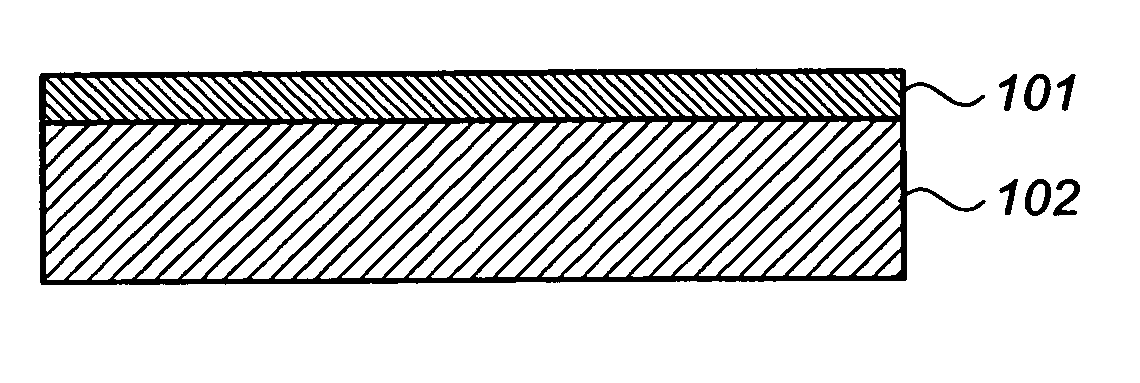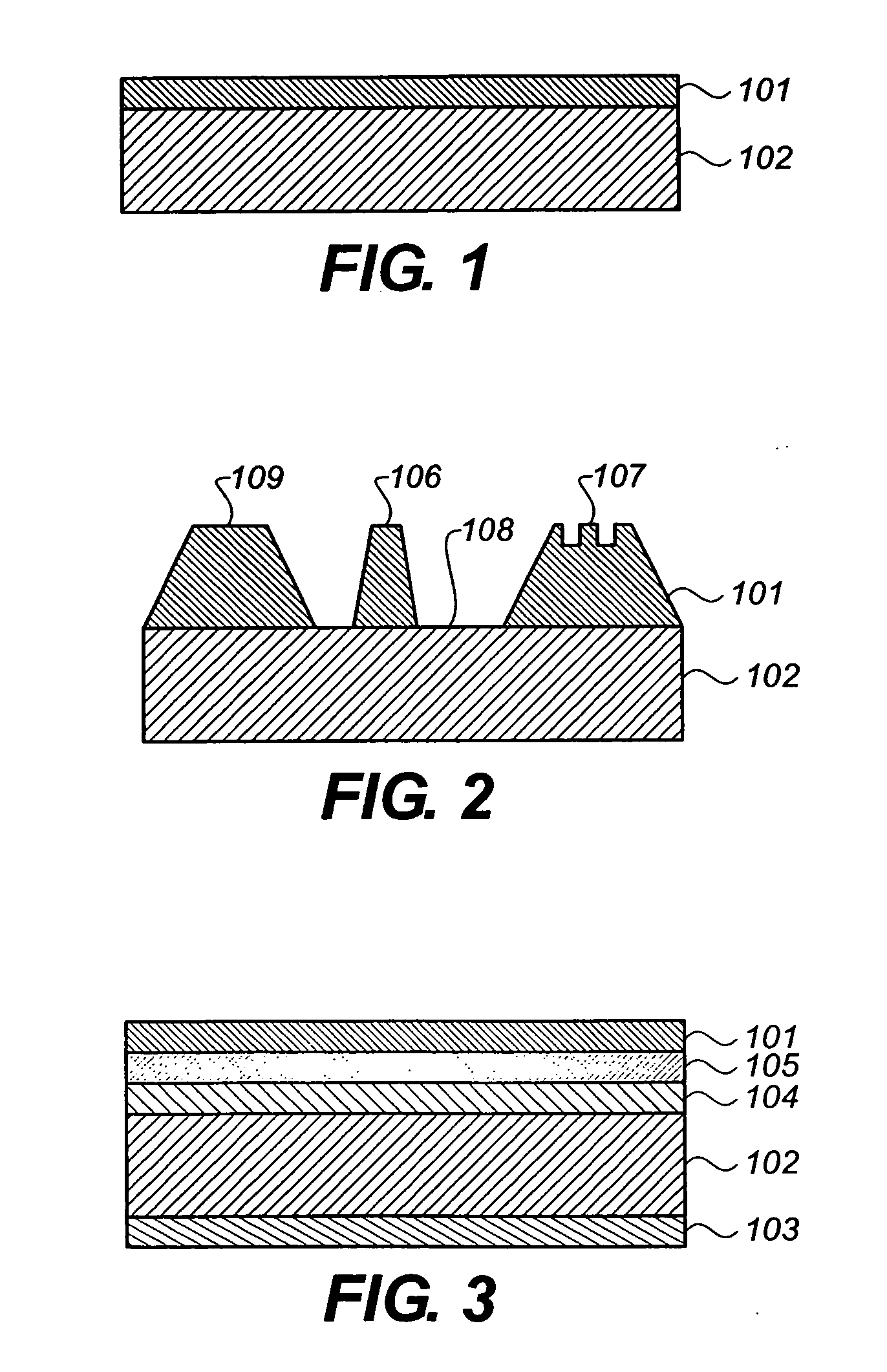Flexographic printing plate precursor and imaging method
a flexographic printing plate and precursor technology, applied in the field of laser imageable flexographic printing plate precursors, can solve the problems of difficult visual assessment of the image by users, more of a problem, inferior quality of lithographic printing in this manner, etc., and achieve the effect of high visual contrast and high visual contras
- Summary
- Abstract
- Description
- Claims
- Application Information
AI Technical Summary
Benefits of technology
Problems solved by technology
Method used
Image
Examples
example 1
Flexograihic Printing Plate Precursor
[0071] An embodiment of this invention like that illustrated in FIG. 1 was prepared and imaged in the following manner:
[0072] The following formulation was prepared by adding and mixing the following ingredients in the order shown:
Ebecryl 230 (urethane diacrylate)28.02 gramsEbecryl 1259 (urethane triacrylate) 7.36 gramsIsobornyl acrylate18.49 gramsOleyl alcohol 6.90 gramsIRR 577 (aliphatic monoacrylate) 7.34 gramsPolyester-block polyether diol 6.51 gramsCumene hydroperoxide 2.96 gramsMagnesium oxide14.51 gramsCab-O-Sil M5 7.90 grams
[0073] The resulting white paste was used to form an underlayer (like the underlayer 102 of FIG. 1). The paste was placed into an aluminum mold with a release film above and below it. The bottom release film also contained a filler layer that could be removed when the upper layer 101 formulation (see below) was applied. The mold was sealed with an aluminum lid and it was heated in an oven for 20 minutes at 160° C. ...
example 2
Preferred Flexographic Printing Plate Precursor
[0077] A preferred embodiment of this invention, similar to that illustrated in FIG. 3, was prepared and imaged in the following manner. All quantities are by weight.
[0078] Mixture A:
[0079] The following ingredients were mixed and ball milled for 12 hours to give a fine dispersion of carbon black in the acrylate monomer.
Mogul L carbon black 8.71 gramsIsobornyl acrylate41.29 grams
[0080] Mixture B:
[0081] The following mixture was made up by adding and mixing the ingredients in the order shown:
Ebecryl 230 (urethane diacrylate)11.524 gramsEbecryl 1259 (urethane triacrylate) 1.732 gramsMixture A17.796 gramsCumene hydroperoxide 1.344 gramsPolyisoprene liquid 1.280 grams
[0082] After thorough mixing, 6.320 grams of Cab-O-Sil M5 were added gradually to Mixture B with high speed stirring as the mixture became increasingly higher in viscosity, forming a thick paste.
[0083] A 300 μm poly(ethylene terephthalate) filler sheet was placed at th...
example 3
[0090] Another embodiment of this invention was prepared and imaged in the following manner. All quantities are by weight.
[0091] The following formulations were prepared by adding and mixing the ingredients in the order shown:
[0092] Mixture C:
CN 9170 (Cray Valley)19.4 gramsEbecryl 1259 5.2 gramsIsobornyl acrylate13.1 gramsIRR 577 5.2 gramsPolyester-block-polyether 4.6 gramsLuperox 231XL40 2.1 grams
[0093] Mixture C was in the form of a viscous liquid.
[0094] Mixture D:
Mixture C35.4 gramsOleyl Alcohol 3.5 gramsMagnesium oxide 6.7 gramsCab-O-Sil M5 3.7 grams
[0095] Mixture E:
CN 9170 (Cray Valley)25.84 gramsEbecryl 1259 6.79 gramsIsobornyl acrylate17.05 gramsOleyl Alcohol 6.36 gramsIRR 577 6.77 gramsPolyester-block-polyether 6 gramsMogul L carbon black 7.75 gramsLuperox 231XL4O 2.73 gramsMagnesium oxide13.39 gramsCab-O-Sil M5 7.29 grams
[0096] Mixture D was milled to form a thick white paste by twice passing it through a triple roller mill. It was then used in the manner describ...
PUM
| Property | Measurement | Unit |
|---|---|---|
| Length | aaaaa | aaaaa |
| Thickness | aaaaa | aaaaa |
| Thickness | aaaaa | aaaaa |
Abstract
Description
Claims
Application Information
 Login to View More
Login to View More - R&D
- Intellectual Property
- Life Sciences
- Materials
- Tech Scout
- Unparalleled Data Quality
- Higher Quality Content
- 60% Fewer Hallucinations
Browse by: Latest US Patents, China's latest patents, Technical Efficacy Thesaurus, Application Domain, Technology Topic, Popular Technical Reports.
© 2025 PatSnap. All rights reserved.Legal|Privacy policy|Modern Slavery Act Transparency Statement|Sitemap|About US| Contact US: help@patsnap.com


